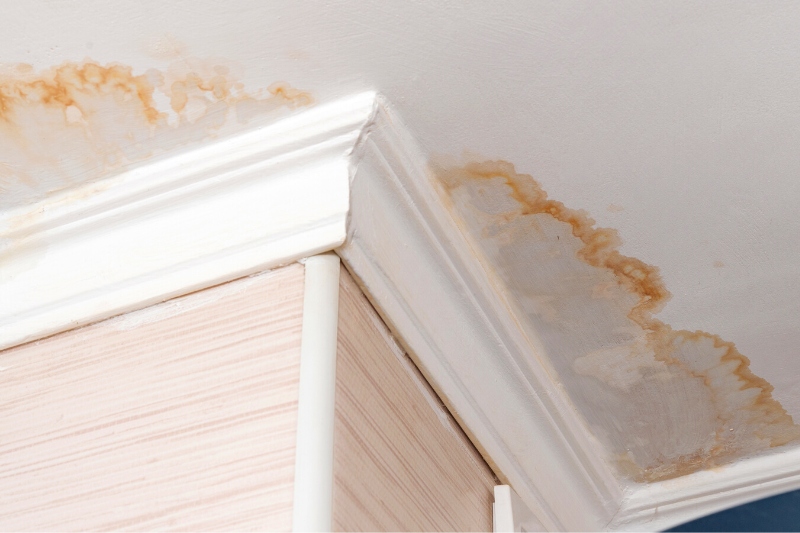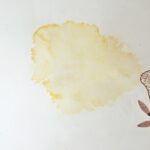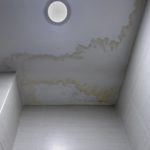There is little that is worse than looking up and noticing brown ceiling stains in your home. Not only do these brown stains look unsightly, but they’re often a sign of more severe damage to the ceiling materials and structure.
It’s tempting to just clean your ceiling, paint over the stain, and pretend nothing has happened. However, this is not a permanent solution.
In fact, it doesn’t fix the problem at all—the damage is still there and is continuing to worsen, you just cannot see it (for now!). Therefore, you must fix the root problem before patching up your ceiling.
In this article, we run through all the potential causes of brown ceiling stains to help you find the source of the issue.
We also have a detailed step-by-step guide on how to fix each of these potential causes, remove brown stains, and return your ceiling to its original condition.
What Causes Brown Stains on the Ceiling?
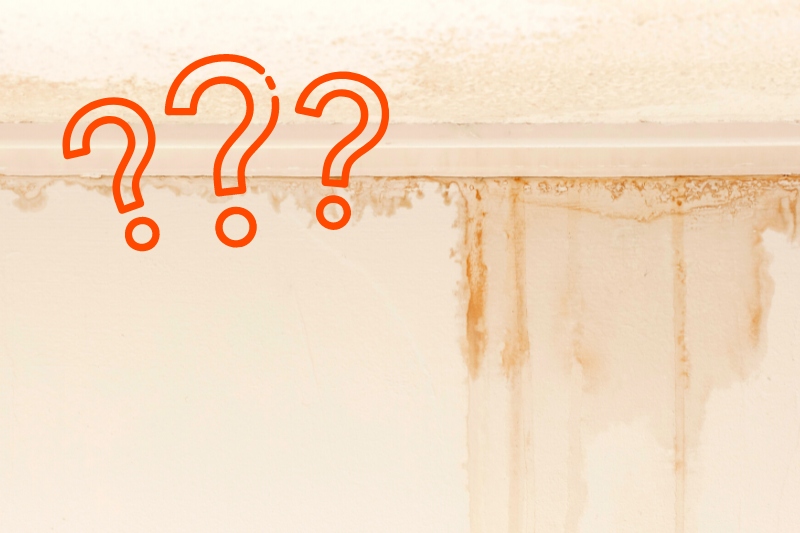
Most brown ceiling stains are caused by excess moisture and are usually a sign of water damage occurring somewhere in your home.
For example, the moisture might come from leaking pipes, damage to your roof, problems with your gutters, or other issues listed below.
Although this is less likely, cigarette stains and mould could also be responsible for the brown patches.
Learn more about each of these possible causes for brown ceiling stains in the following sections to try and identify the root of the issue—the first step in fixing the problem for good!
1. Bathroom leaks
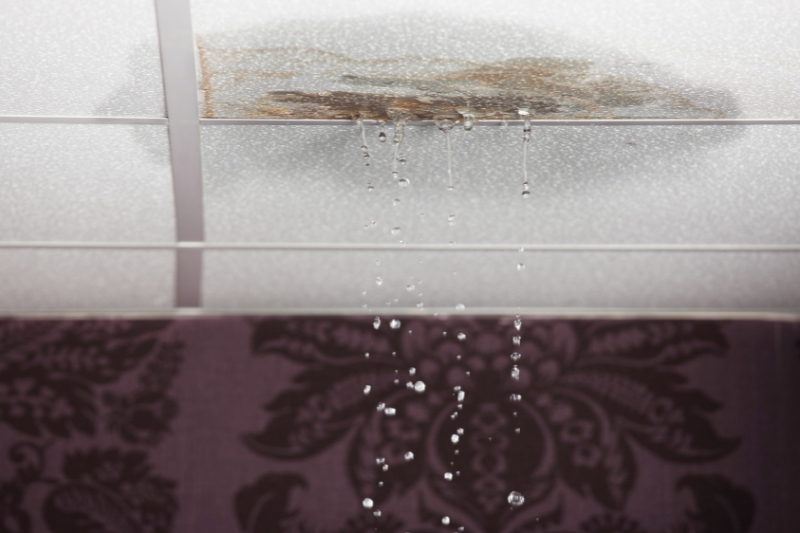
Bathroom leaks are one of the most likely causes of brown ceiling stains. In these cases, the brown spots will usually appear below a bathroom or ensuite.
The water leak might have an obvious cause, such as forgetting to turn the tap off and overflowing your sink or bathtub. Alternatively, the leak could be caused by any of the following issues:
- A clogged sink, toilet, or drain
- Breaks in the sealant around your toilet or shower
- Cracks in any of your bathroom tiles
- Issues with the pipes themselves
Even a small leak in your bathroom plumbing can leave a huge brown mark on your ceiling if left untreated.
As the water slowly drips from the pipes, it is absorbed by the ceiling material, causing visible damage. The stain will get larger and spread as more water drips down.
2. Leaks in your central heating
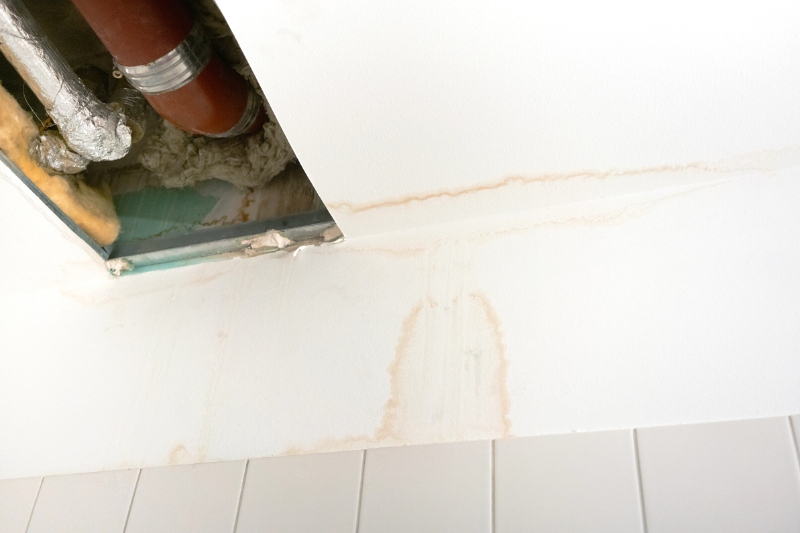
Leaks in your central heating system can also cause unpleasant brown marks on your ceiling. These stains typically run in lines across your ceiling where the pipes are positioned.
Leaks in a central heating system usually come from radiators, but you could be dealing with any of the following issues:
- Pinhole leaks caused by rust on your radiator
- Issues with your boiler
- Faulty valves on your radiators
- Damage to the underfloor piping
3. Damaged roof
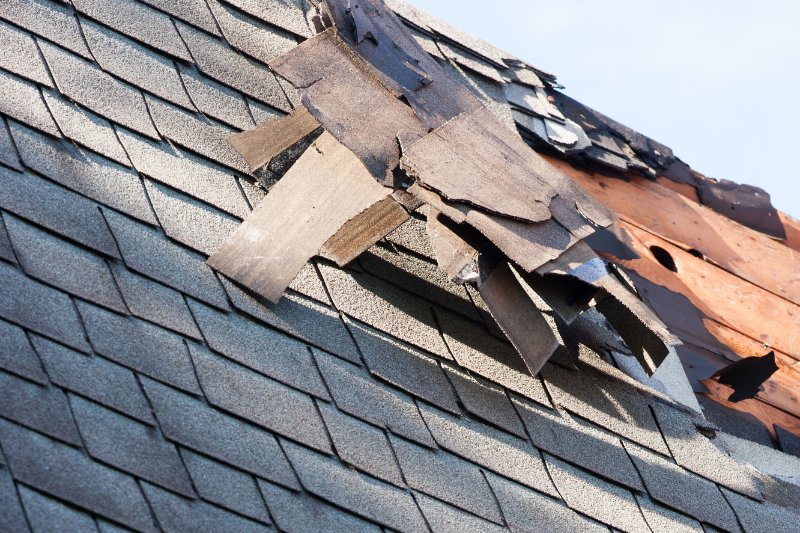
Sometimes, the excess moisture isn’t coming from inside your house, it’s coming from the outside world.
If you’ve recently had heavy rain or a storm and have noticed brown ceiling stains, it’s possible that your roof is damaged. This damage allows water to make its way inside your home.
The most likely cause of a damaged roof is broken shingles. Heavy wind, rain, and hail can cause shingles to come loose or fall off entirely.
Meanwhile, sunlight exposure can cause shingles to crack and break, making your home vulnerable to water intrusion when bad weather comes. Issues with your roof flashing can also be responsible (see below).
4. Skylights, vents & chimneys

Roof flashing is a thin layer of lead-coated metals (such as aluminium, copper, or steel) installed around skylights, chimneys, and vents.
Its purpose is to direct water away from these vulnerable areas. By doing so, it prevents water from seeping into the points where these features join with the rest of the roof.
Damaged or poorly installed flashing around skylights, chimneys, and vents can lead to water intrusion.
The water first drips into the crevice before leaking into your home. As the ceiling gets wetter and more damaged, a brown stain will appear near the affected area.
5. Problems with your gutter
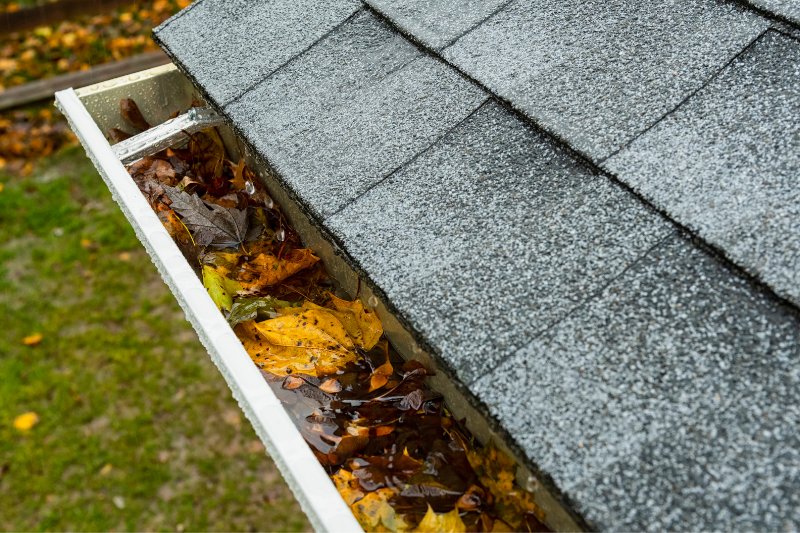
Another cause of brown ceiling stains is gutter problems. Gutters can quickly become clogged with leaves and other falling debris, which causes water to collect.
This water slowly seeps into the roof under the shingles and can cause unpleasant brown marks on the ceiling.
Other potential issues that result in overflowing gutters include:
- Improperly sloped gutters (causes water to pool)
- Clogs somewhere in the downspout
- Gutters that are too narrow for the amount of rainfall
6. Condensation & mould growth
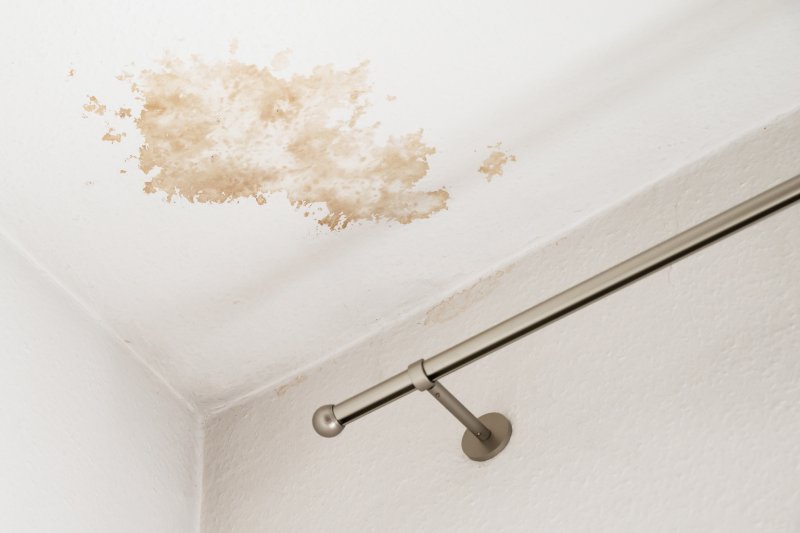
Condensation occurs when warm air comes into contact with a cooler surface and leaves moisture behind. A little bit of condensation won’t cause much harm. However, mould will grow if your ceiling never has a chance to dry, leaving brown mould stains behind.
Mould stains are common in poorly ventilated bathrooms or laundry rooms, as these rooms have optimal environments for condensation to form. They both have high humidity, and bathrooms are usually damp.
The hot air from your shower or tumble dryer gets trapped in the ceiling, leaving water droplets behind and promoting mould growth.
7. Cigarette smoke
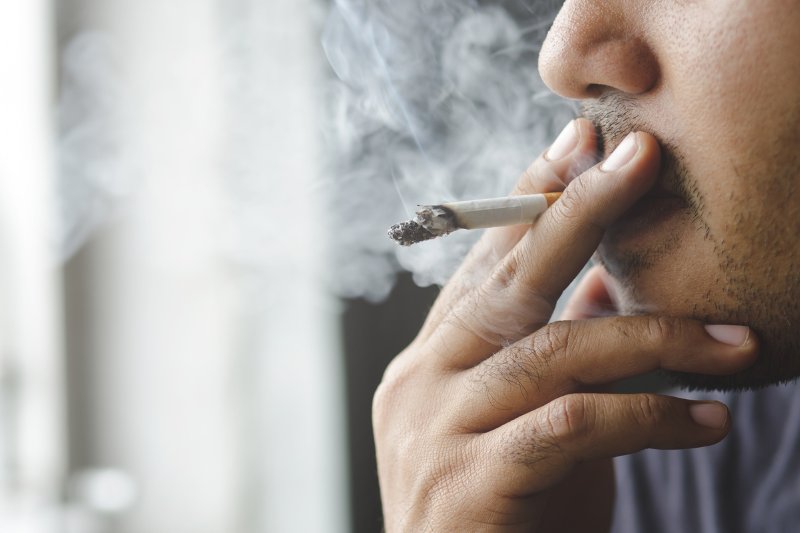
If you’re a smoker, your discoloured ceiling could be caused by cigarette smoke. The tar and nicotine in the cigarette cause the surfaces it touches to become yellowy-brown and discoloured.
Like warm air, smoke rises because it is hotter and less dense than the surrounding air. Therefore, it’s usually the ceiling that becomes the most stained—the cigarette smoke travels upward, hits the ceiling, and is absorbed into the material, leaving a nasty stain behind.
How to Get Rid of Brown Ceiling Stains
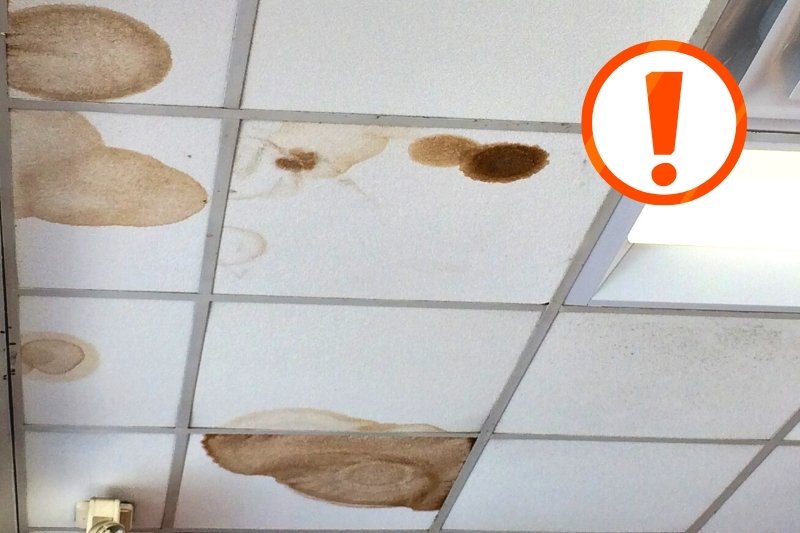
Below is a four-step guide to help you remove the brown marks and return your ceiling to its original condition.
Before you read the following steps, we want to stress how important it is to act quickly.
Most brown marks on the ceiling are caused by water damage or mould growth, which worsen the longer they’re left untreated.
Brown marks will cause more damage to your ceiling the longer they are left, leading to more costly repairs. Act quickly and follow the below steps now.
1. Identify the cause of the brown stains
You must identify the cause of the brown stains on your ceiling. The first step is to work out whether you’re dealing with (1) water damage stains, (2) mould stains, or (3) smoke stains:
- Water stains are misshapen brown patches, often near bathrooms or pipes.
- Mould stains are more dappled and can take on a greeny-back hue.
- Smoke stains are more yellow in colour and tend to cover larger areas.
If you’re dealing with mould or smoke stains, you can skip to the next step.
However, water stains can be caused by many issues, so you need to narrow down the source further. Below are some things you can do to figure this out:
- Consider the location of the stain. For example, is it directly below a bathroom? If so, you’re likely dealing with a bathroom leak. Is it around a chimney or skylight? In this case, failed flashing is more likely responsible.
- Inspect your central heating system. Check the radiator values and look at radiators and exposed pipes for signs of corrosion that could be causing a leak. Start at the pipes and radiators closest to the brown marks.
- Check your gutters and roofing. If you notice any missing tiles from your roof, it’s a likely entry point for water. Likewise, overflowing gutters – even if rainfall hasn’t been too heavy – could indicate they’re letting water in.
- Inspect your bathroom for leaks. Check around the bathtub, shower, sink, and toilet for cracks in your tiles or sealant. You can also spray water at the shower door using a handheld shower to see if any water escapes.
2. Fix the problem at the root
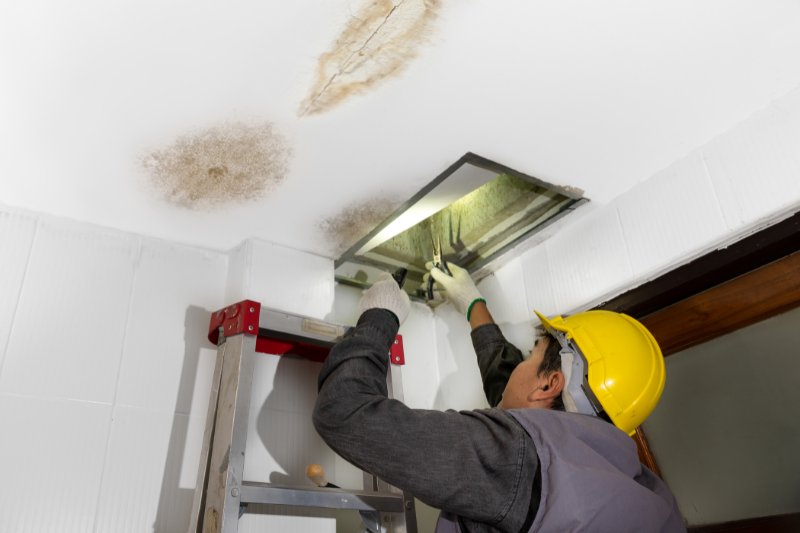
Once you have identified the cause of the brown stain, you need to fix it at its root. Your steps for the repair depend entirely on the underlying cause:
- Bathroom leaks: Bathroom leaks are usually best dealt with by a professional plumber. However, some leaks can be tackled on your own. For example, you can unblock toilets using caustic soda or soda crystals, replace sealant around your bath or shower, or fix broken tiles that could be letting water through.
- Leaks in central heating: For faulty radiator valves, replace them with new ones. Meanwhile, pinhole leaks can be fixed by pouring a leak sealer solution into your central heating system. This seals any small holes in the radiators and pipes as it passes through. If the corrosion is severe, you might want to consider having them replaced instead.
- Roofing issues: If your brown ceiling stains are caused by water leaking through your roof, consider calling in professionals. You’ll need to have the shingles or flashing replaced. These repairs can be costly, but the longer the problem is ignored, the worse the leak gets and the more expensive repairs become.
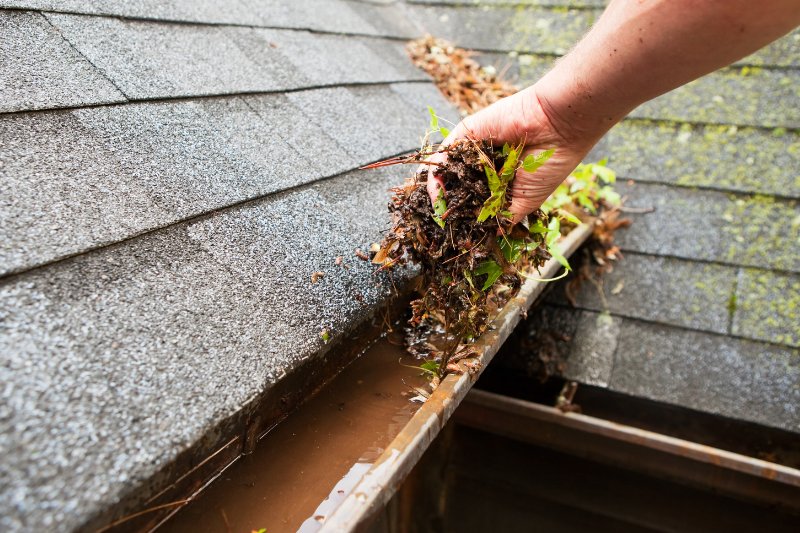
- Overflowing gutters: Climb a ladder and clear out any blockages from your gutters. You should also take a high-pressure sprayer to remove any clogs in the downpipe. If the water is still not flowing correctly, use a spirit level to check that the gutters are at a slight downward angle towards the downpipe. If they’re not, call out a professional to get them adjusted.
- Condensation: The easiest way to solve a condensation problem is to improve the ventilation in your home. Get a professional to install an extractor fan in your bathroom if there isn’t one already. Simple actions like opening the window after showering or wiping down the surfaces with a squeegee can also help.
- Cigarette smoke: The root cause of a smoke-stained ceiling is, well, smoking! There is no big problem that needs to be corrected or a larger structural issue at hand. You can skip straight to the final step. However, you might want to consider smoking outside the home so the brown stain doesn’t return.
3. Repair structural damage
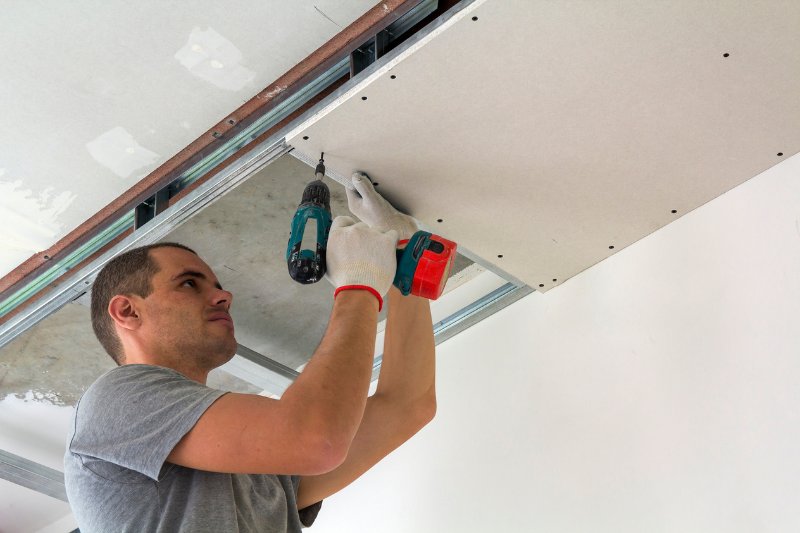
Brown ceiling stains caused by condensation or cigarette smoke can usually be repaired without structural repairs, so you can skip step four. But unfortunately, this isn’t the case with brown stains caused by water damage.
Moisture can result in serious problems, causing the plasterboard to rot and become soft.
Depending on the severity of the leak, the plasterboard might need to be replaced. After fixing the leak, wait for the ceiling to dry completely and reassess the damage.
If your roof is sagging, cracked, or in thorough need of repair, follow these steps:
- Use a wire detector to check for electrical wires under the stained area.
- Avoiding any wires, cut away the damaged section of the plasterboard. Cut to the nearest joist and try to cut the stained section away in one square piece.
- Measure out the size of the hole on the new plasterboard (ensure that it’s the same thickness as your existing ceiling). You can use the cut-out damaged section as a template.
- Take the new piece of plasterboard and screw it in place using plasterboard screws.
- Apply jointing compound around the new piece of plasterboard and over the screws, then cover the joins with plasterboard tape.
- Reskim the ceiling using plaster once the jointing compound has dried. If you have a decorative patterned ceiling, this step is usually best left to professionals.
4. Repaint your ceiling
It’s finally time to repaint your ceiling! Before you start, clear the area and lay down a drop sheet to catch any paint splashes as you work. Then, follow the instructions below:
Clean the ceiling

Start by cleaning your ceiling. Begin by brushing away any dust and cobwebs, then tackle the stain with an appropriate cleaning solution:
- Smoke stains: We recommend using a solution of vinegar and bicarbonate of soda at a ratio of 4:1 for cigarette-stained ceilings as this helps to deodorise and remove the stain. You can instead use washing-up liquid and water.
- Mould stains: Vinegar also works for mould, or you can find commercial mould removers at your local supermarket. Our guide to cleaning mould off walls can be applied to ceilings if you need more help removing mould stains.
- Water stains: We recommend using either white vinegar or a bleach solution for water stains. Apply either cleaning product to the ceiling, let it for around ten minutes, then rinse the area with a sponge.
Apply a primer
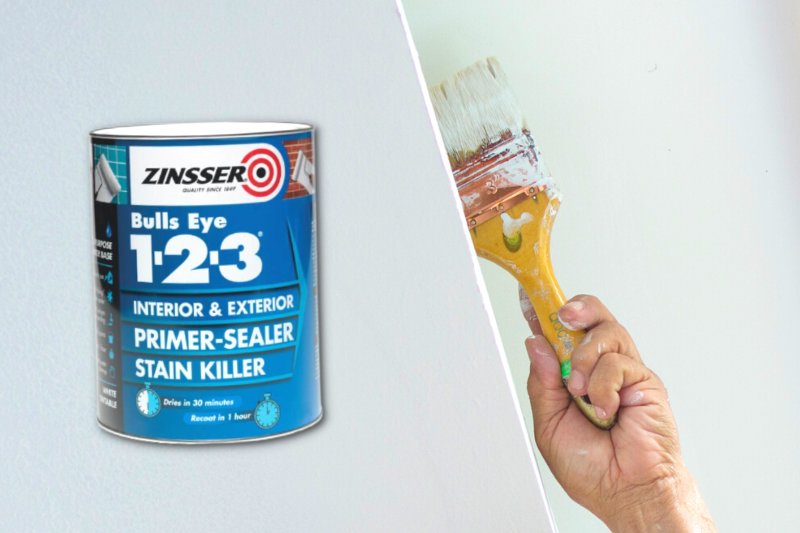
Wait for the ceiling to dry completely before applying a primer. Oil-based undercoats like Zinsser are your best option.
They provide a base layer for your paint, as well as contain products that help to block stains and prevent future mould build-up.
Paint using a paintbrush or roller
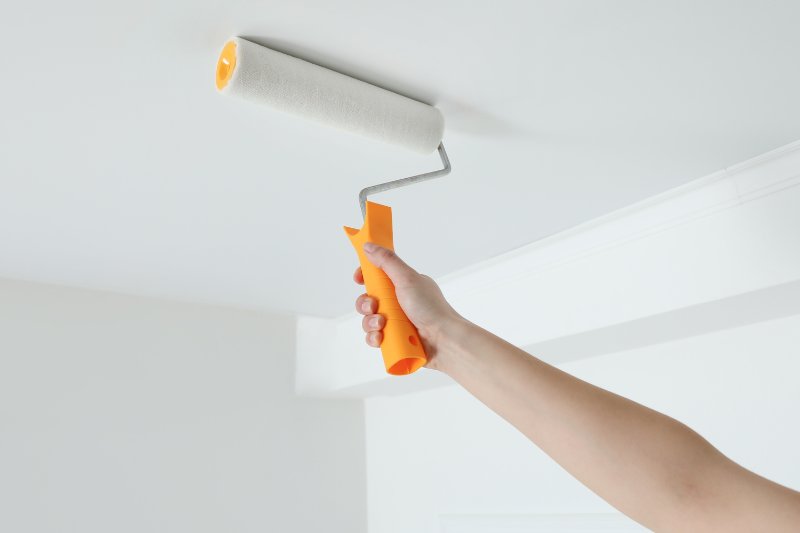
Wait for the primer to dry before painting the ceiling using a paintbrush or roller (the best tool to use depends on personal preference and the size of the area you need to cover).
Apply one coat, wait for it to dry, and go in with a second coat if needed.
After applying the final coat of paint, your ceiling should be as good as new! And because you fixed the root of the problem, the nasty brown ceiling stains should stay at bay.

Hannah has a passion for cleaning. She worked her way around Australia by cleaning hostels in exchange for free accommodation and used her cleaning skills to bag a job as a chalet host for a luxury ski company in France.
